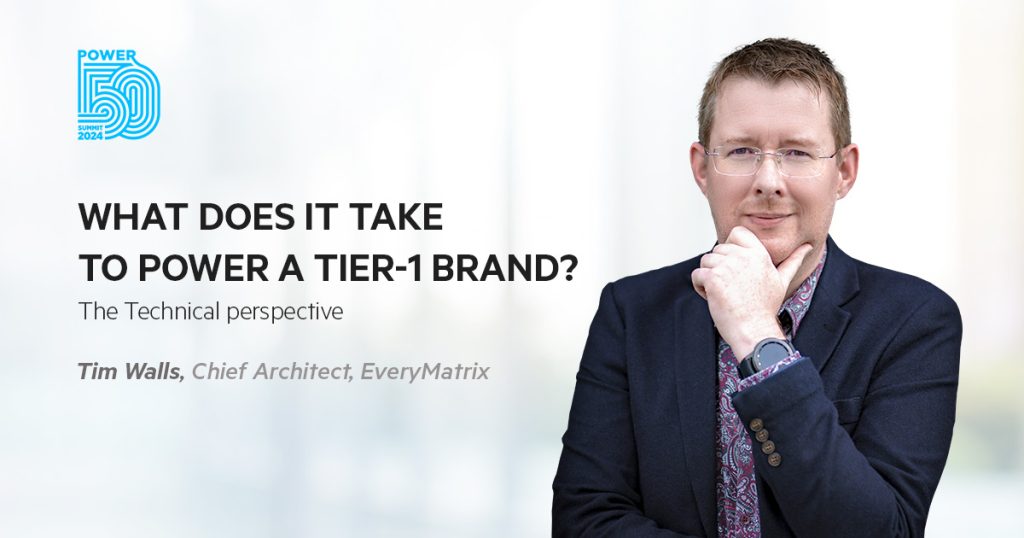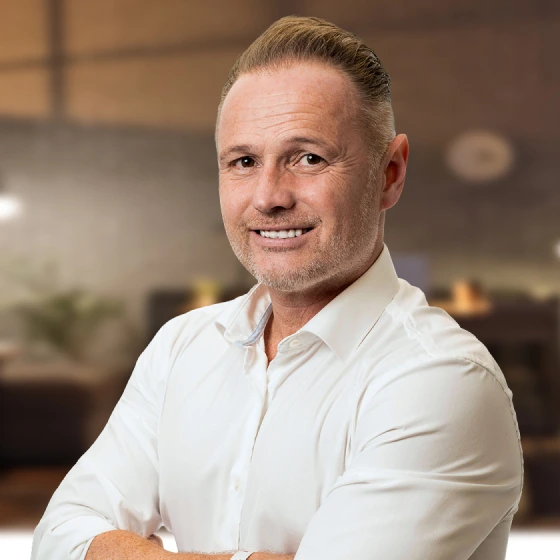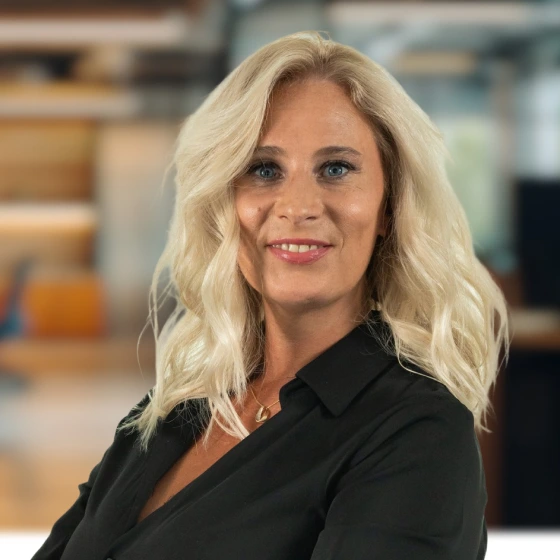Tim Walls on powering a tier-one brand

EveryMatrix celebrates its 15th anniversary this year. From two co-founders a decade and a half ago to 850+ employees in 12 countries serving 300+ customers in 2023, it is the fastest growing iGaming technology supplier, consistently generating record results for customers, many of whom are among the biggest brands in the industry.
So, what does it take to power a tier-1 brand from a technical point of view? Tim Walls, Chief Architect, has been with the company for nine of its 15 years and helped steer EveryMatrix from what he describes as a “McDonalds” to radically changing strategy in 2015, leading to the business becoming recognised as offering world-class integration and flexibility that has seen its success skyrocket and partner with multiple major tier-1 brands.
Here he explains the four core components of technical success that enable EveryMatrix to continually grow, hit record profit levels and power tier-1 operators including its largest ever migration and technology integration project with bet-at-home and the Hungarian Lottery.
Select your strategy & remain agile
I look back to when I started and often refer to us using the McDonalds model at the time, whereby companies offered comparable products with limited customisation to hundreds or thousands of small fee paying clients.
When I joined in 2014 that was shape of the industry. Many iGaming suppliers were doing the same and many operate in that way today, but a year later we ripped up the rule book and took a completely new approach both from a technology and a strategic perspective to go after bigger clients, offering them software solutions they needed and continue to need more than ever – but recognising these operators already had significant platform investments and would need a significantly more customisable and modular approach.
In 2015 we rebuilt the platform with this in mind so that every component has an API that integrates into others – the same APIs that we use to integrate our own products for a turnkey client are available to our clients to enable the integration of their own or third-party components. Customers can take CasinoEngine or OddsMatrix, for example, or any combination and it won’t be the first time we’ve done that integration, so we’re fully supportive and hugely technically proficient. Our processes, technology, approach, speed and services continue to lead the industry.
We pride ourselves on innovating faster than our competition, while also re-investing our profits into improving our technology infrastructure, delivery and resilience. This isn’t to say they might not catch up in a split second so there is no way we can ever stand still.
No one is perfect and it takes a joined up approach from the entire organisation, from my team, to commercial and sales, to project and account management to compliance and legal and many others to join forces to continually deliver excellence for all our customers including tier-1s. We’ve just proven this with recent go-lives with two of our most complex and large-scale projects to date in bet-at-home and the Hungarian Lottery.
Iterate, iterate, iterate…
We rebuilt our platform eight years ago with the aim of being simple to integrate, but we also had a monolith of a platform and a sizeable database that everything else dangled from. Ask any technology business and they will tell you how much work is involved in moving away from a monolithic system. When we moved from that towards a modular future it could easily have killed us, especially if we’d then replaced it with another monolith.
The key here was to replace our legacy system but not to build ‘a new legacy’ in its place; we considered from the start that our modular approach shouldn’t just be a benefit for our customers, it should also allow us to take an iterative and evolutionary approach to our platform in future.
Some of the elements we developed and launched in the first wave of development have since been rewritten or refactored, sometimes several times, and what we must constantly remind ourselves is this is not a sign of failure, but of success in that we can repeatedly upgrade. I believe this kind of genuinely agile architecture is a real differentiator compared to our competitors and will allow us to continue to stay ahead as we continue to embrace new technology.
The next step is to bring this same strategy, process and technology to the lottery space, where we have made huge inroads in recent years, to enable them to benefit in the same ways iGaming operators have. This is an area I’m heavily involved in so watch this space.
Uptime and resilience: Invest for the future
As a technology supplier we are measured on several factors with resilience and uptime the most vital to deliver to all our customers, but this is particularly the case with tier-1s when the scale is so large and there is so much at stake if things don’t go to plan. Our success and our customers’ success go hand-in-hand therefore investment in infrastructure is paramount as is also futureproofing our infrastructure so we can deliver as close to 100% uptime rates as possible every second of every day.
This has been driven by demand and growth with several of our larger customers experiencing phenomenal progress. Keeping up with that is far from a simple task but one we strive to achieve. To attain this, we are increasingly segregating our infrastructure. We previously adopted a shared infrastructure strategy between clients. Customers have directly benefited from the lower costs that we can offer with a shared platform but, due to huge growth and signing larger tier-1 customers, we have rapidly invested – and continue to invest – in more dedicated infrastructure and data centres across multiple regulated and regulating markets, recognising the need for localisation and individual needs. We are fortunate in that we have very understanding customers who equally recognise that growing together in this way is the path to a long-term, sustainable and profitable future.
Prepare for Cloud transition
We are more ready than most for the transition to the Public Cloud and have been using Cloud native technologies since 2015. This will be an even bigger shift across the industry but we’re prepared.
We have been early adopters of cloud technologies such as containers and orchestration that are now commonplace, and I can’t think of a major enabling technology that we use that you wouldn’t find on the (in)famous Cloud Native Computing Foundation (CNCF) landscape diagram (which fosters open source projects by helping to provide end-user communities with viable options for building cloud native applications.) For us, this is more than just a box-ticking exercise – we make significant use of commercial cloud services, as well as operating our own datacentres as essentially private clouds from an operational point of view, allowing us to deliver the best possible value to our operators.
In a market segment such as iGaming, regulators can often be slower to adopt new technologies than businesses might like, but the move to the Cloud is inevitable so being able to say and prove that we are Cloud Native and ready is a huge plus.
One drawback of commercial cloud services is that while the costs are not necessarily higher, they are certainly more directly visible, and it is often the case that – particularly as a Services provider with many clients where we can leverage significant economies of scale – we can still more cost-effectively deploy capacity in our own datacentres.
This drives an increasing area of development and investment for us in ‘hybrid cloud’ solutions for ourselves and clients; allowing us to deploy ‘base capacity’ in our own facilities at unbeatable cost, while dynamically taking advantage of commercial cloud provider capacity to immediately scale up when events – like a local derby in the Champions League final, or a major rollover of a lottery jackpot – demand unlimited capacity.
The original version of this interview was published by EGR Global.
Ready to start a conversation?
The key for us as a true B2B iGaming software provider is to help gaming operators implement bold ideas and unleash their creativity. Everything is possible.
Talk to an expert







